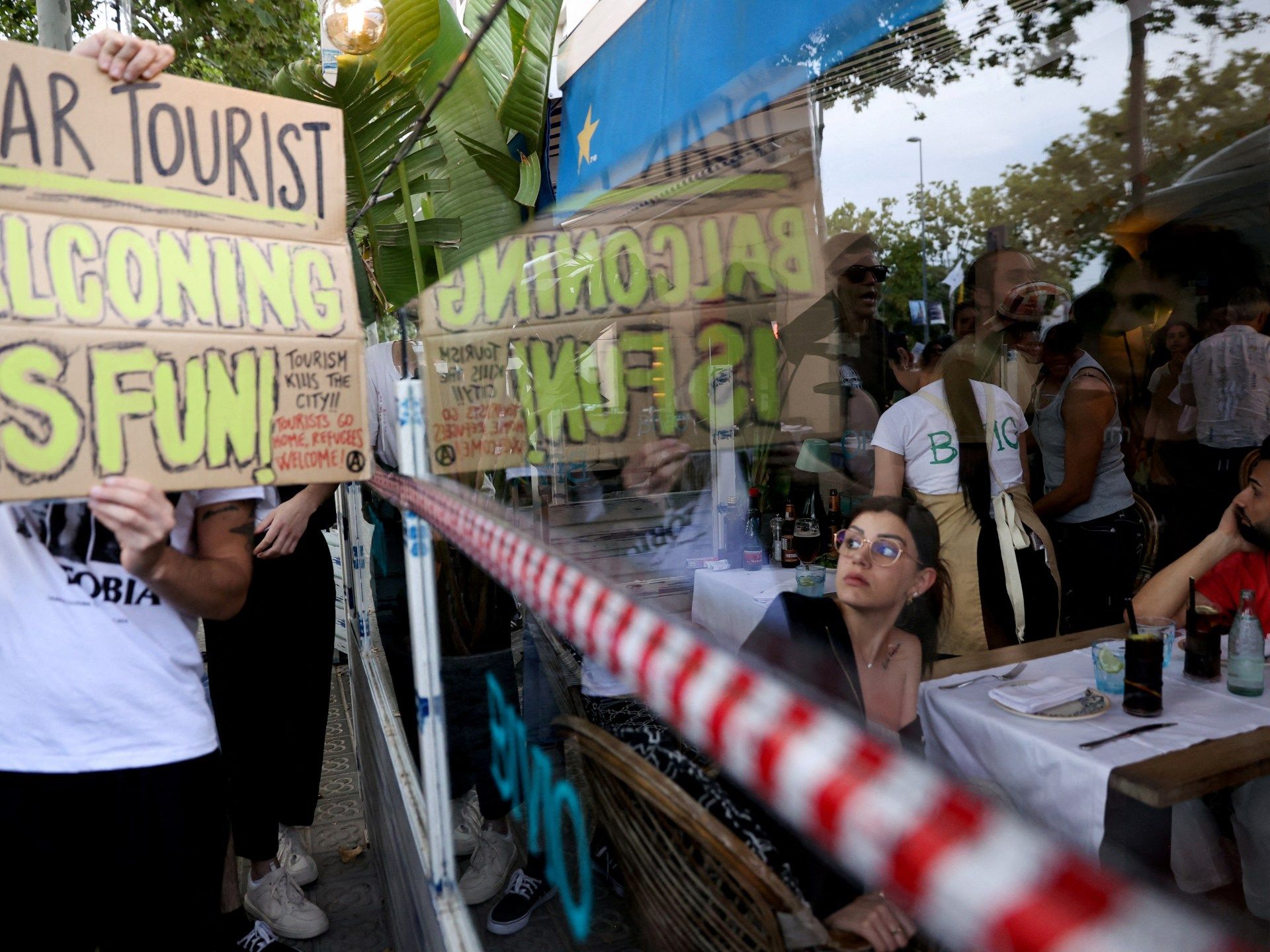EXPLANATOR
Thousands of people protest against mass tourism in Barcelona due to rising housing costs.
Videos of Barcelona residents firing water pistols at tourists in a restaurant in the city have been widely shared on social media. And it's not fake news. Residents of Spain's most visited city didn't mean to harm tourists, but they are sending out a message: “Tourists, go home.”
It was the latest in a series of protests against mass tourism in the country, which is expected to attract 85 million visitors by 2023.
Barcelona, home to beautiful beaches and the world-famous Barcelona football club, It attracts millions of tourists every year, but the record influx of visitors has hit the property sector. raising rent prices beyond the reach of some city residents.
Here's more information on the anti-tourism protests in Barcelona.
What happened?
- Around 2,800 anti-tourism protesters marched in Barcelona on Saturday, July 6, according to police.
- Videos circulating on social media showed protesters carrying banners with slogans such as “Tourists, go home” and “Barcelona is not for sale.”
- They were also seen using colourful plastic water guns to spray water at visitors in the tourist area of Las Ramblas.
- Protesters also cordoned off restaurants and hotels in the northeastern coastal city using red tape.
Why are there anti-tourism protests in Barcelona?
- Rising house prices are the main concern of the protesters. According to the property website Idealista, rental prices in Barcelona have increased by 18 percent in the past year.
- Over the past decade, rents have increased by 68 percent and the cost of buying a home has risen by 38 percent, making the city uninhabitable for locals. Tourist apartments, including online rental sites, have put a strain on the local housing market.
- To combat this, Barcelona's mayor, socialist Jaume Collboni, announced on June 21 that more than 10,000 tourist apartment rentals will be banned from 2028.
- This is not the first time that a mayor of Barcelona has taken such measures. In 2017, former mayor Ada Colau also introduced “anti-tourism policies”.
- The protesters also oppose a tourism-based economy, which they say is making them poorer and more dependent on visitors.
- This is not the first time tourism has been singled out as a problem in Spain. In April, 57,000 protesters marched in protest against tourism in the Canary Islands, the Spanish archipelago located about 2,200 kilometres southwest of Barcelona, off the west coast of Africa.
- Anti-tourism protests also took place in Palma de Mallorca and Malaga, Spain, in May and June, respectively.
Who is protesting in Barcelona?
- 180 local organizations have joined together to plan the protests.
- They are headed by the Assembly of Neighborhoods for Tourism Decrease (ABDT).
- “The demonstration was the result of years of grassroots work, in progressive alliance with more and more organisations,” ABDT told Al Jazeera in a written statement.
- The ABDT said it has had no communication with the Barcelona authorities since the protest and is awaiting a response.
What are the demands of the anti-tourism protest in Barcelona?
ABDT's website featured 13 proposals on Saturday, including:
- Withdrawal of plans to expand the airport's infrastructure, along with a gradual reduction in the number of cruise terminals in the Port of Barcelona until they are eliminated.
- Elimination of licensed and illegal tourist apartments and reduction of accommodation in the city.
- Decommodification of public space and limits on large events.
- Protection of local trade, improvement of working conditions and salaries for workers in the tourism sector and suspension of public funding for tourism.
- Make the tourism industry pay for its exploitation of public services.
- Transformation of part of the remaining tourism sector, but oriented towards the necessary leisure of the population.
How many tourists visit Barcelona?
- Around 12 million tourists visited Barcelona in 2023, according to local authorities.
- After France, Spain received the second-highest number of tourists in 2024, with 85 million foreigners visiting the country, according to the National Institute of Statistics.
- The most visited region was Catalonia, which attracted 18 million tourists last year. Catalonia has a population of 7.6 million, of which 1.6 million live in Barcelona.
- What draws tourists to Barcelona are the totems of Catalan culture, ranging from architectural attractions such as cathedrals and basilicas to parks, beaches and markets.
In which other countries have residents discouraged tourism?
- 'Don't come to Paris': Ahead of the 2024 Paris Olympics, which are set to begin in late July, residents of the French city are taking to social media to discourage tourists from visiting the city during the sporting event. Among the reasons they cited were hotel price hikes, tourist scams, pickpockets and the fact that fares for travel on the Paris metro nearly double during the Olympic season.
- Anti-tourism graffiti in Athens: In May 2024, residents of Athens joined other European countries in protesting against overtourism, leading to graffiti appearing across the Greek capital with slogans such as “No tourists, no hipsters.”
- Anti-tourism protests in Venice: In July 2017, around 2,000 protesters took to the streets in Venice, Italy, to protest against tourism, claiming it has eroded their quality of life and the environment.
- Restrictions on tourists in Kyoto: In December, a group of residents of Gion in the Japanese city of Kyoto petitioned the city hall to take action against tourists, resulting in Kyoto authorities banning foreign visitors from entering the narrow alleys of the Gion geisha district.












